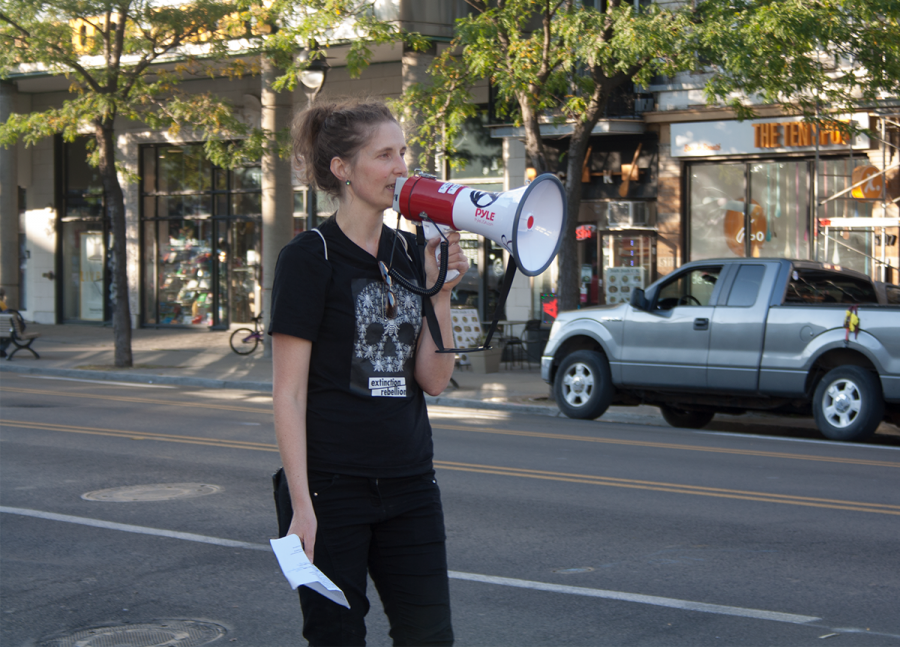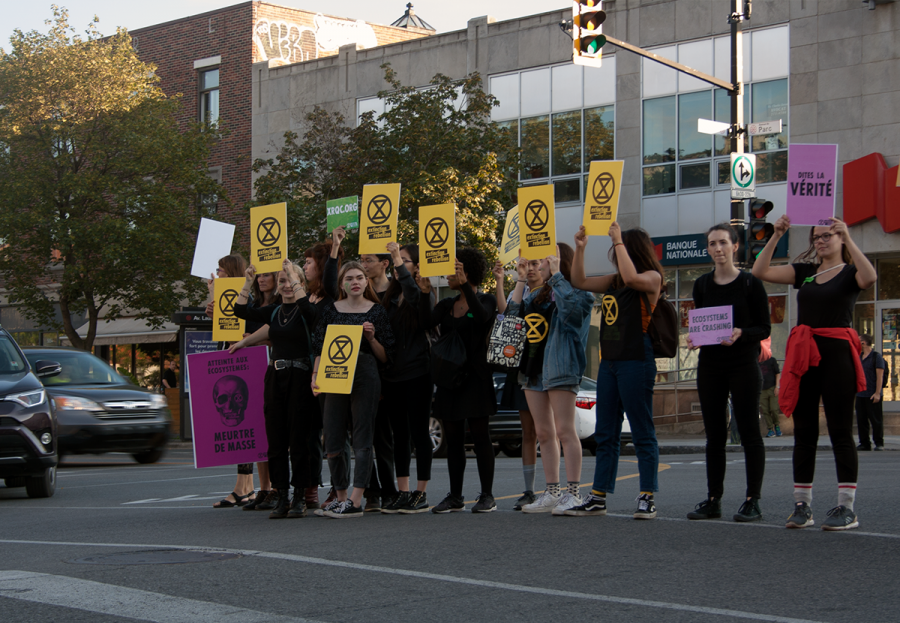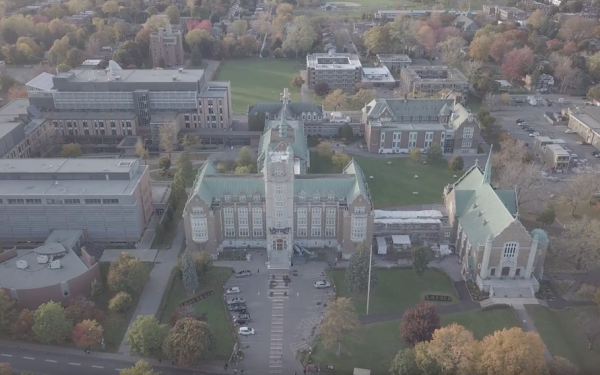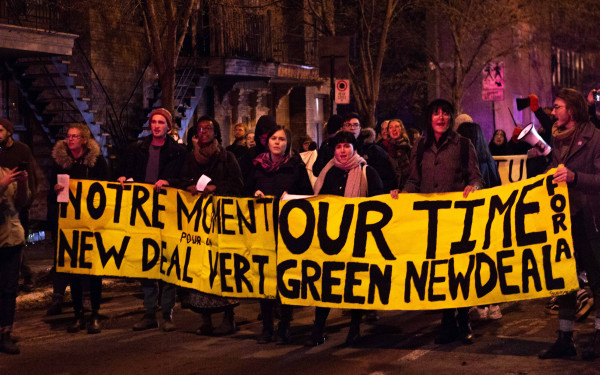Extinction Rébellion Continues Slow Swarms
Protests to Continue Until End of October
Around 40 people dressed in black swarmed Park and Laurier to protest climate change on Sept. 20, late Friday afternoon.
Before Extinction Rébellion’s Slow Swarm began, a meeting was held a few blocks away from the intersection. Elza Kephart, Tactical Coordinator at XR, made the rules of the demonstration very clear: no fighting naysayers, no walking into oncoming traffic, and no yelling.
Demonstrators broke off into two groups and rotated around the Mile End intersection. They held up signs, and stood single file when the light turned red, and shuffled to the curb before the light turned green. Their signs read: “The oceans are boiling”, “The Arctic is melting”, and “If not now, when?”
Kephart, used a megaphone to deliver their message. As cars passed they would honk and wave their hands out the window in support.
The reason the Slow Swarms are quiet, besides the voice coming from the megaphone, is so onlookers can easily understand XR’s goals and learn the science behind climate change. The clarity of their message and their small numbers encourage people to get involved.
“A lot of people were interested in what was happening and some people gave us their emails,” said Eva-Love Pepin, a Coordinator for XR Youth.
As this was XR’s fifth Slow Swarm, Kephart is no stranger to police intervention. “Our legal council said that because we had a lot of arrests in July,” blocking traffic with a large scale protest would not be the best idea, Kephart said.

While blocking incoming traffic isn’t always an arrestable offence, it would open XR up to potential mischief charges.
The Slow Swarm’s appeal is that it’s a low-risk action. “It draws a lot of people who want to act” but are not ready to face intense confrontation with disgruntled motorists or risk arrest through civil disobedience, Kephart explained.
While participating in a Slow Swarm can be seen as not doing much tangibly, “it still gives people the feeling they’re acting on the problem,” Kephart said. These smaller forms of protesting also make it easier for anyone to join.
A smaller group of people and XR’s hourglass logo look more approachable than a parade of people chanting slogans and stopping traffic.
Joining a Slow Swarm is a small step, but it is one that “might be necessary for people to take,” Kephart said. She is hoping people will be more willing to take direct action and potentially risk arrest in the future.
Slow Swarms are “just one piece of the puzzle,” Kephart added, but they are essential to the long fight for climate change awareness.
Mobilizing ourselves in the streets is one of the few ways we have left to cause change.
—Kelly Martin
For many, this was their first time participating in a Slow Swarm. Arriving to the corners of Peel and Laurier by bike, Nathalie Charpentier decided “today is the first step.” This was her way of “dipping [her] toes into the water.” Charpentier already lives ecologically by avoiding single-use plastics and composting, but she felt it was time to take her activism into the public sphere.
Kelly Martin from the Canadian Association of Physicians for the Environment felt the same way.
“Mobilizing ourselves in the streets is one of the few ways we have left to cause change,” Martin said. “This isn’t something I would normally do,” but you see more of the middle class taking action now “because they want to do something.”
According to Martin, too many people are ignoring the reality of how serious climate change is, and how drastically it is going to change our near future.
XR’s next big demonstration will be on Oct. 8, the Week of Rebellion. There will also be events headed by XR Youth during the same week, but none are currently confirmed.
A previous version of this article states that the next XR demonstration will take place on Oct. 7, when in fact it will take place on Oct. 8. The Link regrets this error.


_600_832_s.png)

_600_375_90_s_c1.jpg)


